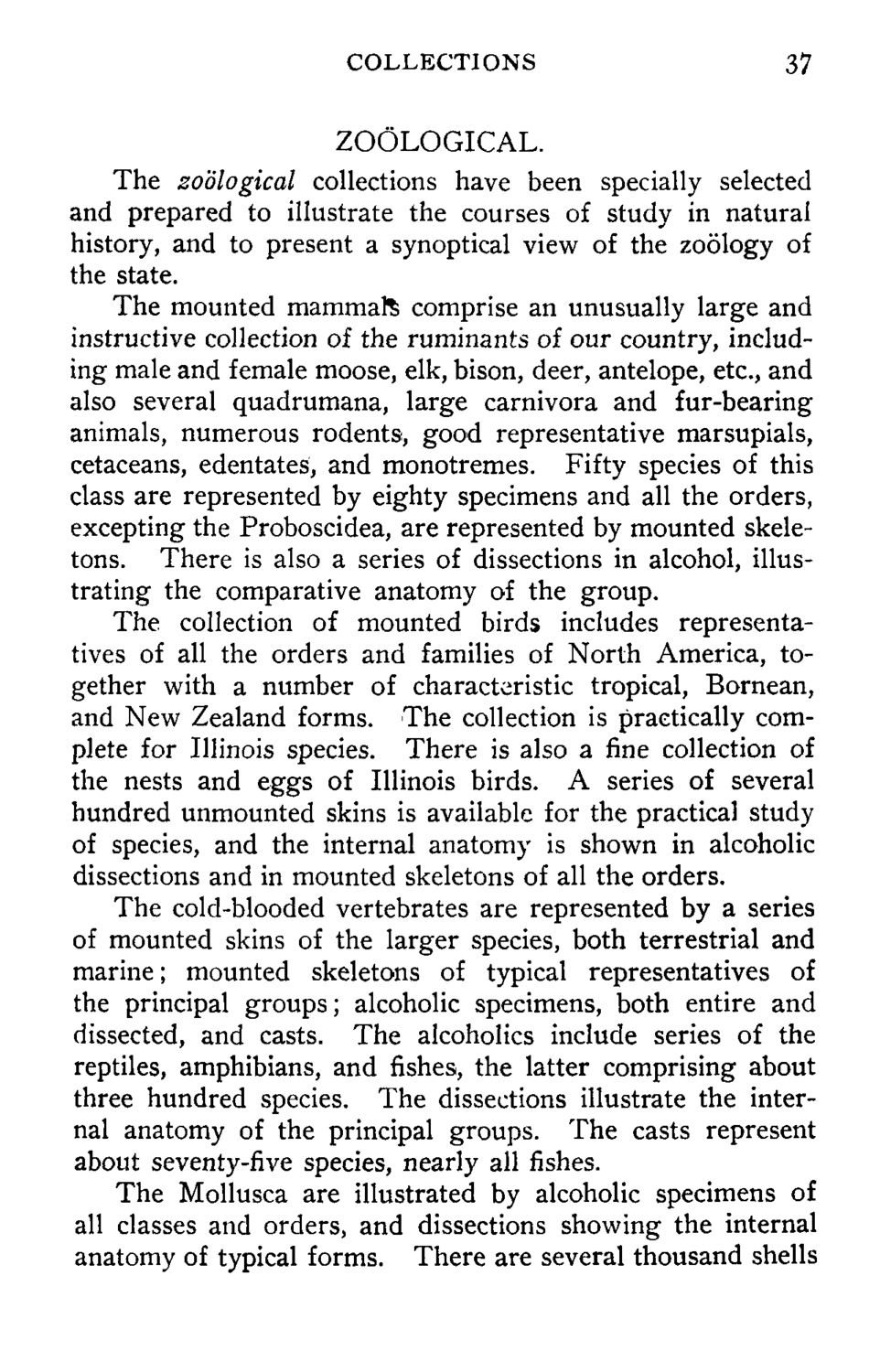| |
| |
Caption: Course Catalog - 1899-1900
This is a reduced-resolution page image for fast online browsing.

EXTRACTED TEXT FROM PAGE:
COLLECTIONS 37 ZOOLOGICAL. The zoological collections have been specially selected and prepared to illustrate the courses of study in natural history, and to present a synoptical view of the zoology of the state. The mounted mammals comprise an unusually large and instructive collection of the ruminants of our country, including male and female moose, elk, bison, deer, antelope, etc., and also several quadrumana, large carnivora and fur-bearing animals, numerous rodents, good representative marsupials, cetaceans, edentates, and monotremes. Fifty species of this class are represented by eighty specimens and all the orders, excepting the Proboscidea, are represented by mounted skeletons. There is also a series of dissections in alcohol, illustrating the comparative anatomy of the group. The collection of mounted birds includes representatives of all the orders and families of North America, together with a number of characteristic tropical, Bornean, and New Zealand forms. The collection is practically complete for Illinois species. There is also a fine collection of the nests and eggs of Illinois birds. A series of several hundred unmounted skins is available for the practical study of species, and the internal anatomy is shown in alcoholic dissections and in mounted skeletons of all the orders. The cold-blooded vertebrates are represented by a series of mounted skins of the larger species, both terrestrial and marine; mounted skeletons of typical representatives of the principal groups; alcoholic specimens, both entire and dissected, and casts. The alcoholics include series of the reptiles, amphibians, and fishes, the latter comprising about three hundred species. The dissections illustrate the internal anatomy of the principal groups. The casts represent about seventy-five species, nearly all fishes. The Mollusca are illustrated by alcoholic specimens of all classes and orders, and dissections showing the internal anatomy of typical forms. There are several thousand shells
| |